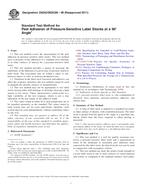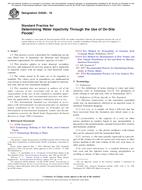1.1 This guide defines terminology and covers general requirements for conducting fretting fatigue tests and reporting the results. It describes the general types of fretting fatigue tests and provides some suggestions on developing and conducting fretting fatigue test programs.
1.2 Fretting fatigue tests are designed to determine the effects of mechanical and environmental parameters on the fretting fatigue behavior of metallic materials. This guide is not intended to establish preference of one apparatus or specimen design over others, but will establish guidelines for adherence in the design, calibration, and use of fretting fatigue apparatus and recommend the means to collect, record, and reporting of the data.
1.3 The number of cycles to form a fretting fatigue crack is dependent on both the material of the fatigue specimen and fretting pad, the geometry of contact between the two, and the method by which the loading and displacement are imposed. Similar to wear behavior of materials, it is important to consider fretting fatigue as a system response, instead of a material response. Because of this dependency on the configuration of the system, quantifiable comparisons of various material combinations should be based on tests using similar fretting fatigue configurations and material couples.
1.4 This standard does not purport to address all of the safety concerns, if any, associated with its use. It is the responsibility of the user of this standard to establish appropriate safety and health practices and determine the applicability of regulatory limitations prior to use.
Product Details
- Published:
- 11/01/2010
- Number of Pages:
- 10
- File Size:
- 1 file , 320 KB


